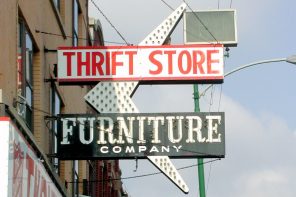Fashion used to be simple. Sure, it would have its weird phases; one day Britney Spears would decide to sag her pants and lift her underwear, and another, Kanye West would wear a Swiss cheese inspired t-shirt with holes across the body. In either case, the next day there would be thousands of replicants roaming the streets. Fashion changes, and as a main source of self-expression, there are millions of variations of what people deem fashionable. But the true North Star of luxury fashion was always the combination of consistency and timelessness. Louis Vuitton would never release a hoodie, and Burberry would never create an overcoat that would lose its value after one or two generations. These principles have allowed high-end fashion brands to survive many cycles, becoming the ‘establishment’ of the fashion world. However, a seismic shift has recently occured; luxury retailers have been making waves in an area known for its anti-establishment status: streetwear.
At its core, streetwear is loosely defined as informal wear, generally worn for comfort, instead of style. It shares origins with the punk subculture, creating an association with punk’s anti-establishment values. With baggy, loose clothing and colourful accessories, streetwear was made to clash with the clean look of classical fashion. Now, after decades of division, the lines between streetwear and luxury have blurred, a trend epitomized by the astromic rise of streetwear mega-brand Supreme. Originally a New York skateboard shop, Supreme operated well under the radar, until adopting the ‘drop’, a new sales technique that revolutionized the sales world.
A drop occurs when the brand releases a very limited quantity of merchandise at a specific time to create hype surrounding the product. The hype stimulates greater demand, which in turn, drives up prices of the product, attracting more buyers who have the goal of reaping profits in the secondary market. A loop of increasing demand and ever-rising prices is created. A trend originating from anti-establishment origins has created its own mini bubble market, where every drop is akin to the hottest new IPO.
Since its conception, many traders have entered the market, including Kyle Maiorano, a 20 year old college student at Binghamton University, who has made over $200,000 by reselling Adidas Yeezy Boosts.
In fact, StockX, an online streetwear marketplace describes itself as a “stock market for things.” Since its conception, many traders have entered the market, including Kyle Maiorano, a 20 year old college student at Binghamton University, who has made over $200,000 by reselling Adidas Yeezy Boosts. In an interview with BBC Capital, Maiorano explains that, like a seasoned trader, he identifies the best times to enter and exit the market to avoid steep declines.
The streetwear market has matured into a multi-billion dollar industry, highlighted by the Carlyle Group, a Private Equity fund, acquiring a 50% stake in Supreme for $500M. With valuations rapidly rising, many luxury retailers have entered the market, afraid of missing out on the streetwear craze. Louis Vuitton created a frenzy on the internet when it teased a collaboration with Supreme, and a few weeks later, its $60,000 trunks sold out in mere seconds. The insanity does not end here. Later that year, BBC’s Children in Need redesigned its famous mascot, Pudsey (a teddy bear), to be knit with a Supreme x LV bandana instead of its original eyepatch, eventually reselling for over $100,000.
The trend of collaboration between high fashion and streetwear is more than a fad. According to a report from the consulting firm Bain & Company, sales from major luxury retailers have stagnated for 2 years, but its entry into streetwear has ignited a new fire into the industry, growing revenues by 5% in under a year.
As the saying goes, fashion is continuously evolving. Trendy clothes lose popularity, and are replaced by faster than the seasons change. Ideologies have lost meaning through fashion before, and streetwear may be the newest victim. Perhaps, in the coming years, we’ll see collaborations between anti-establishment punk icons such as the Sex Pistols, and the same brands that have become that establishment.



